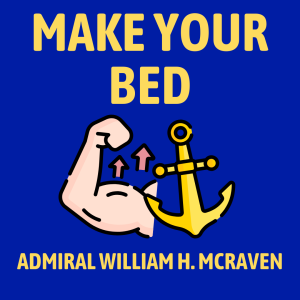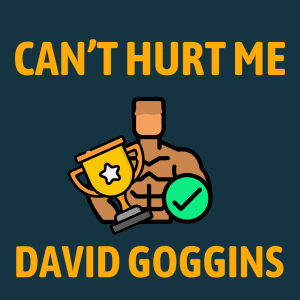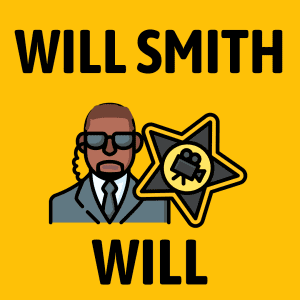What does it take to be a leader in the U.S. Navy SEALs? Imagine making decisions where every choice could be a matter of life or death. That’s the daily reality for the most elite military teams in the world.
“Extreme Ownership” is not your average leadership book — you’re getting a masterclass in leadership and discipline from the best of the best. Think of it as a playbook for how to lead in high-stakes situations, whether in a boardroom or on a battlefield.
Who are Jocko and Leif?
Jocko Willink and Leif Babin are both retired U.S. Navy SEALs with a combined 33 years of military experience. They served in the Iraq War as part of the highly decorated SEAL Team Three. Later they co-founded Echelon Front, a leadership consulting firm.
👑 1. Take Extreme Ownership: Leadership is embracing full responsibility for everything that happens and blaming no one else
Many people believe that leadership is about always sounding confident and never showing weakness. But what if that was actually the OPPOSITE of effective leadership?

That is exactly the idea proposed in this book. Jocko and Leif say powerful leadership is all about taking MORE responsibility for others, admitting your mistakes publicly, and embracing extreme humility.
In other words, putting the well being of others before your own ego. (And, well, isn’t that a refreshing perspective on leadership?)
What is Extreme Ownership? It’s the practice of YOU the leader taking full responsibility for everything in your domain, including ALL of your team’s actions, outcomes, mistakes and failures.
According to the authors, Jocko Willink and Leif Babin, a true leader:
- Embraces accountability. When something goes wrong, they don’t point fingers, but proactively take the blame and investigate what happened to prevent similar situations in the future. They acknowledge mistakes and seek constructive criticism so they can develop an improved plan to win. This approach not only earns the respect of your team, but also builds a culture of high standards and continuous improvement.
In the bestselling book The 7 Habits of Highly Effective People, leadership author Stephen Covey echoed this point saying, “Until a person can say deeply and honestly, ‘I am what I am today because of the choices I made yesterday,’ that person cannot say, ‘I choose otherwise.'” - Sets a positive example. A leader’s attitude is infectious. By embodying Extreme Ownership, you set a standard for others to emulate and create an environment where everyone strives to recognize and learn from their mistakes.
The word “extreme” in this book title is not about placing unreasonable demands on others; it’s about YOU as the leader embracing responsibility beyond what seems reasonable to most people. That’s how you inspire higher performance in your team members. - Guides underperforming team members. When a team member falls short, a true leader takes it upon themselves to train them up to the right standard of performance. Or, if necessary, they make the tough decision to let them go, for the greater good of the team and mission.
Imagine the difference between a manager approaching someone with the attitude of “why did you make this mistake” versus “it’s my fault I didn’t explain this well enough.” By you putting aside the ego and taking the blame, it avoids provoking defensiveness in the other person, allowing them to see the problem clearly and correct their future actions.
A SEAL Example:
It was during the Iraq War after 9/11. In the dust and heat of Ramadi, Iraq – Navy SEAL Commander Jocko Willink faced a nightmare situation. His team had mistakenly fired on a building that contained U.S. soldiers. Tragically, the lives of soldiers were lost in the friendly fire incident, which is the worst situation that can happen in combat. In the aftermath, Jocko Willink’s career hung in the balance.
Jocko responded decisively with extreme ownership. He took full responsibility for the situation. He avoided making excuses or blaming others, even though the mistake happened due to a whirlwind of factors. Then Jocko conducted a thorough review of the military’s operating procedures, to help make sure the same errors never repeated. With these actions, he not only regained the trust and respect of his superiors, but also led his team members to embrace the same level of extreme accountability.
A Business Example:
An executive at a manufacturing company proposed a cost-cutting plan, which seemed foolproof on paper, but the measures soon faced strong resistance from both above and below. The board of the company didn’t provide the support that he needed and employees were against a new plan for sales incentives.
After meeting with Jocko, the executive decided to take extreme ownership. He stopped pointing fingers at the board and took full responsibility for the plan’s failure. Then he shifted focus to how he could more effectively communicate the benefits of the plan with the people in his company so everyone was onboard.
- Extreme Ownership is about taking full responsibility for every aspect of your team’s performance.
- When you lead by this example, everyone is better able to learn from mistakes and failures, leading to sustained high performance.
“Never criticize, condemn, or complain” is one of the key principles in “How to Win Friends and Influence People” by Dale Carnegie. The idea is that even the worst people never condemn themselves for anything, so by confronting someone directly all we usually manage to do is offend them. We can be far more influential and persuasive leaders by providing indirect criticism instead.
For instance, instead of telling a team member, “Your report was late and incomplete,” a leader practicing indirect criticism might say, “I’ve noticed your recent reports have had some great insights. How do you think we can ensure they’re submitted on time to maximize their impact?” This approach encourages the team member to reflect on their actions and come up with solutions, fostering a more constructive and less confrontational atmosphere.
A true leader must by acknowledging mistakes and avoiding blaming others.
Respond adaptively
Engage team members
Take full responsibility
Share credit
📏 2. Never Tolerate Low Standards: The most important role for any leader is as the role model and enforcer of high standards
Why do some teams excel while others falter? According to “Extreme Ownership,” the biggest factor is always the leader, not the team. Jocko and Leif assert that with the right leader, almost any team can transform its performance.

A leader’s most crucial role is to be the living example of the standards they expect. It’s not enough to simply state these expectations; leaders must embody and enforce them.
Why is it so important that a leader refuses to tolerate low standards? If a mistake goes unaddressed, that lower standard of performance becomes the new norm. In a short time, any team can slide down the path of mediocrity.
A SEAL example:
It was Hell Week, an especially intense part of the famously difficult SEAL training. The trainees were split into seven-person teams called boat crews, that had to carry 200-pound rubber boats through obstacle courses on the beach in seemingly endless races.
During this particular Hell Week, one team was consistently winning the races and another team was losing almost every race. That is, until the SEAL instructors swapped the team leaders of those two boat crews.
Suddenly, the losing team was able to begin winning, illustrating how the leader is the greatest factor in the performance of a team. What happened to the old winning team? They continued to perform well thanks to the high standards their past leader had instilled.
- The success of a team largely depends on the leader’s commitment to high standards and their unwillingness to tolerate anything less.
Steve Jobs was famous for his incredibly high standards. He once said, “Be a yardstick of quality. Some people aren’t used to an environment where excellence is expected.“ His relentless pursuit of perfection made Apple a leader in innovation, but it also meant working under Jobs was really demanding and intense. For example, he insisted on switching to a glass screen for the first iPhone right before it launched, causing intense pressure on the engineering team.
In "Extreme Ownership," a leader's standards are determined not by what they preach, but by what they .
Prefer
Tolerate
Demand
Expect
🎯 3. Discipline Leads to Freedom: Surprisingly, greater control and discipline in our lives pave the way for increased flexibility
Discipline is not the opposite of freedom, as most people believe. Discipline is actually the road that leads to freedom. This truth is deeply counterintuitive.

The concept of “discipline equals freedom” is about how being more structured in our lives can open doors to greater flexibility and achievement.
The most disciplined Navy SEALs clearly demonstrated this truth. They were the ones who woke up early, followed strictly ordered schedules, and as a result, were able to accomplish more of what they wanted to within the confines of their tightly scheduled days of SEAL training.
Jocko himself exemplified this: setting his alarm early was the only way to carve out time for personal goals, like studying or cleaning. By following a controlled schedule, that allowed him to do more of what he wanted.
This principle also applies to teams. The more disciplined each member is in understanding their roles and duties, the standard operating procedures, and the mission objectives – the easier it is to adjust the plan when needed and communicate the changes to everyone, without the mission spiralling into chaos and confusion.
SEAL example:
During SEAL operations in Iraq, when searching buildings for evidence, in the beginning their approach didn’t follow any specific process. They basically just ransacked the building. This chaotic method was imprecise, so they ended up searching some rooms twice and others not at all.
Finally, a more disciplined standard operating procedure was created. The SEALs initially resisted it, believing it was too complex. But Jocko was able to convince them the old way was not working well and to try it out. After just a few practice runs, they were excited to find it only took 10 minutes to gather evidence from a building, compared to their previous time of 45 minutes.
- Discipline equals freedom because as we practice more self-control, we gain more flexibility to do what we want.
- Teams that follow disciplined procedures are better able to adjust flexibly when required.
David Goggins’ early live was marked by poverty, prejudice, and physical abuse. As a young man battling obesity and a lack of self-esteem, he transformed his life through sheer discipline. Goggins went from weighing over 300 pounds to becoming an ultra-endurance athlete, even setting a world record for most pull-ups in 24 hours. He also overcame his fear of water and a poor academic record to become a Navy SEAL.
In his book “Can’t Hurt Me,” Goggins describes the turning point in his life like this: “From then on, I brainwashed myself into craving discomfort. If it was raining, I would go run. Whenever it started snowing, my mind would say, Get your f-ing running shoes on. […] As a result, I became tougher. And being tough and resilient helped me meet my goals.”
Disciplined Navy SEALs did more of what they wanted during their training with the specific habit of .
Taking breaks
Intense workouts
Strict diets
Waking up early
🦸 4. Be a True Believer: To inspire and guide others effectively, you must first deeply believe in the mission yourself
To lead is not just to give people orders – it’s about convincing and inspiring them to commit fully to the mission. The best way to accomplish that is by first being a “true believer” in the mission yourself, because your words and actions will always reflect your authentic belief or doubt in the plan. Here’s how…

- Ask enough questions. To fully grasp the reasoning behind the plan, you must ask lots of questions – even stupid questions – to your superiors. Ask until you’re able to explain the reasoning for the mission convincingly to your own team.
- Adjust the plan as needed. If you have the authority to do so, then adapt the mission plan until it is something you can stand behind. A true leader knows that even the best plans may need adjustments.
- Explain why, not just what. To truly inspire your team, it’s essential to explain the reasons behind their tasks. Don’t just tell them what to do; share the ‘why’. This approach helps team members see the bigger picture and understand their role in the mission. It builds a deeper level of engagement and commitment, as they’re not just following orders – they’re contributing to a purpose they understand and believe in.
SEAL Example:
In Iraq, the SEALs were told they could only fight while alongside Iraqi soldiers. At first, Jocko Willink struggled with following this order. He worried this would disadvantage and endanger his SEALs, because the Iraq Army was poorly trained and ill-equipped compared to them. However, he sought to understand the broader strategy from his superiors’ perspective.
Willink realized the ultimate goal in Iraq was not just immediate military success, but preparing the country’s forces for long-term stability and self-defense. This meant the Iraqi Army needed real combat experience.
With this new understanding, Willink embraced the order, explaining its significance to his troops. This shift in perspective not helped the SEALs see the value in working with the Iraqi soldiers. It also led to unexpected benefits as the Iraqis’ local knowledge helped the missions significantly.
A Business Example:
In one company, the executives created a new sales incentive program, that basically cut the pay for many salespeople. The sales managers were worried, but too afraid to talk about the plan with their superiors. Eventually, the CEO found out about this, and explained the reasoning behind the plan. It would save the company money and reward the best salespeople with more, even though lower performing salespeople would make a little less. Once the managers understood this, they were able to support the new program, and realized they should have asked about it much sooner.
- Effectively leading and inspiring others means not just giving orders, but fully understanding and believing in the mission yourself.
The business author Simon Sinek wrote, “People don’t buy WHAT you do, they buy WHY you do it.” His core idea is that the best companies unite both employees and customer around a common mission, purpose, or “why.”
Apple is a prime example of this. They were never about building computers (what they did), but always emphasized innovation and design excellence (why they did it). As a result, they have a customer base that is fiercely loyal across many product categories.
In order to fully understand a mission's plan, it is essential to .
Trust superiors
Wait for clarity
Ask questions
Rely on intuition
🔗 5. Ego Aside, Team First: Embracing humility helps us acknowledge areas for improvement, because no individual is more important than the larger team and mission
Ego can be a major stumbling block in leadership and decision-making. While ego drives us to be the best, it’s crucial to set it aside when necessary for the greater good of our team and mission. No one person is more important than the larger, collective goal.

Putting aside our ego allows us to acknowledge areas where we can improve, rather than maintaining we are always right. It helps us have clear judgement to see things as they truly are, including where we contributed to setbacks and missteps.
Accepting blame, even when the other person seems at fault, opens the door to constructive conversations and solutions.
SEAL example:
In the deadly war zone of Ramadi, Iraq, various U.S. troops needed to work together, including the Army, Marines, and SEALs. The SEALs usually saw themselves as above following the grooming standards that other parts of the military did. But in this case, Jocko had his SEALs put aside their ego and followed strict standards in their grooming and uniforms, so they could build a spirit of respect and camaraderie with the other soldiers. Later they were joined by another elite group that didn’t try to blend in, so eventually frictions arose between them and other soldiers, and they were sent back by the Colonel.
Business example:
Leif Babin received an urgent call from Gary, a middle manager at a drilling company they consulted for. The manager was dealing with a drilling chief who didn’t follow standard operating procedures for buying equipment, causing delays. Initially upset, Gary realizes the chief wasn’t trying to be defiant, but simply lacked understanding of the reason behind the procedures (SOPs). Advised to put his ego aside, Gary decides to take extreme ownership by seeing his own role in not explaining clearly to the drilling chief the company’s larger goals and the importance of following SOPs.
- Putting aside ego is essential for effective leadership, because it lets us acknowledge personal faults and facilitates constructive discussions.
"Extreme Ownership" says that accepting blame, even when we feel like we don't deserve it, leads to .
Constructive conversations
Heightened tensions
Weakened authority
Diminished ego
🛡️ 6. The Laws of Combat: Effective teamwork is driven by strategies like Cover and Move, Simple, Prioritize and Execute, and Decentralized Command
Understanding the “Laws of Combat” is crucial for any team aiming for success. These 4 key strategies are not just military tactics, but powerful tools for fostering effective teamwork and achieving objectives in any environment.
a) Cover and Move

- “Cover and Move” is a military strategy where one team provides cover while the other team moves forward. It’s really about different teams working together towards a common goal. The same strategy can be applied to any business or organization.
- It’s about finding ways to work together with “outside” teams. In companies, teams often work in departments or silos, get caught up in their own problems and blame other teams for setbacks. Instead, leaders within a company should step back to consider bigger picture of common mission.
- Business example: At one company, the production manager was upset he was being forced to work with a subsidiary company as a supplier, which was causing problems for his department. But after learning they shared same parent company and overall mission, he decided to help the subsidiary company become more efficient and get resources they needed. In turn, this helped his own department get the supplies they required.
b) Simple
- Keeping plans simple is very important.
- It helps you narrow your team’s focus to the most critical objectives.
- It allows everyone to execute and communicate the strategy better.
- And it helps individual team members adjust their actions on-the-ground when needed, because they clearly understand the core plan.
- SEAL example: During one operation in Ramadi, Iraq, Jocko convinced them to simplify a new patrol, beginning with only covering a short distance to get a handle on the dangers of the city, then gradually expanding.
- Business example: A company’s new bonus program at its manufacturing plant was too complex, confusing employees about how to earn bonuses. The chief engineer and plant manager had created a detailed system based on many factors, but it didn’t work because it was too complicated. They simplified it, which helped employees understand how to improve and earn bonuses. This change led to better productivity and also helped the company identify and let go of lower-performing employees, benefiting everyone.
c) Prioritize and Execute
- To avoid overwhelm during high-pressure situations, identify highest priorities, then execute them one at a time. Trying to address several issues at a time is usually inefficient. Begin with single highest priority, get team focused on it, then next one and next one. SEALs have a saying, “Relax, look around, make a call.”
- Business example: A pharmaceutical company was losing money, so the CEO made a plan with several big steps, like introducing new products, expanding to new markets, and changing the website and sales team. But doing everything at once was too much. On Jocko Willink’s advice, the CEO focused the resources of the company just on supporting the sales team first. After a few months, revenues began increasing, so the company was able to move on to their next biggest priority.
- Related concept: Decisiveness amid uncertainty. Being a leader means making decisions even with incomplete information. In most cases, it’s better to make a decision quickly even if your strategy is imperfect, than to remain frozen waiting for 100% certainty. You’ll never have all the information. There are always risks.
d) Decentralized Command
- Decision-making should happen at lower levels, not just from the top, to increase organization adaptability and effectiveness. Communicated the big-picture plan, explain the reason why you’re doing it, then give people trust and flexibility in how they execute it.
- Keeping team sizes between 5-10 members is ideal for manageability, a practice even the SEALs follow by dividing larger groups into smaller units of 4-6. In a business example, the regional president of a large company noticed an imbalance in their structure, with some managers handling 22 people and others only 2. To fix this, they reorganized so that each branch manager was responsible for 4-6 people, creating a more balanced and manageable workload.
- Communicating proactively with your superiors is called “Leading up the chain of command.” Making them aware when you’re facing an especially difficult challenge and what resources you need to complete your mission.
- These four “Laws of Combat,” originating from military tactics, are crucial for fostering collaboration, focusing on priorities, simplifying execution, and empowering decision-making at all levels in an organization.
What strategy emphasizes collaboration between different teams towards a common goal?
Simple
Decentralized command
Prioritize and Execute
Cover and Move
- Set Clear Standards: Write down specific performance standards for yourself and your team, and review them weekly.
- Establish Routine: Create a daily schedule prioritizing key tasks, ensuring disciplined focus on important goals. Jocko recommends beginning with waking up early.
- Define Mission: Write a personal or team mission statement and review it during weekly planning sessions.
- Support Teammates: Identify a team member’s project each week and offer tangible assistance or collaboration.
- Simplify Communication: Break down complex instructions or plans into clear, simple steps before sharing them.
- Prioritize Tasks: List all current tasks, then highlight the top three most urgent and important to tackle first.



























Community Notes